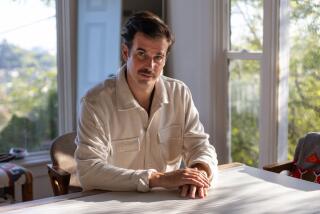Served 8 Years in Soviet Prisons : Dolgun, ‘American in Gulag’ Author, Dies
WASHINGTON — Alexander M. Dolgun, an American who was snatched from the streets of Moscow in 1948 and spent eight years in Soviet prisons, is dead of kidney failure at age 59.
Dolgun died Tuesday at a hospital in nearby Gaithersburg, Md., after a six-week illness.
He chronicled his chilling tale in a 1975 book, “Alexander Dolgun’s Story: An American in the Gulag,” detailing his arrest by Soviet security police and subsequent torture in prison.
Dolgun was 8 when his father, an automotive mechanic, moved the family from New York to Russia. They were prevented from leaving because of World War II, and young Alexander went to work as a messenger at the U.S. Embassy in Moscow, later becoming head of the files section of the consular section. He was arrested one day on his lunch hour.
Approached While Walking
“It was 1:10 p.m. I was walking on Gorky Street in Moscow and this guy came up and started talking loudly,” Dolgun said in a 1974 interview with the Washington Post.
“When I showed him my ID card, he took it and didn’t return it. He said, ‘Here comes a friend with a car.’ It pulled to the curb with both back doors open. I started to run, but two other men grabbed me and threw me into the car.”
U.S. diplomats made an initial protest but abandoned the case, Dolgun wrote in the book, “because relations between the United States and Russia were so touchy that if any approach were made on my behalf I might be shot.”
Dolgun wrote that security police “accused me of espionage and questioned me for two days and two nights without interruption.”
He was held for a full year at Moscow’s Lefortovo Prison in a “psychic cell” with the walls painted black.
Refused to Confess
He refused to confess to spying, and was transferred to Sukhanovka Prison, “where the beatings went on every day except Sunday.”
Alexander Solzhenitsyn, in his chronicle of Soviet prisons, “The Gulag Archipelago,” wrote that Dolgun was the only person he ever heard of emerging from interrogation at Sukhanovka.
During his internment at Sukhanovka, Dolgun said, he never saw another prisoner, although he did hear some of them groaning. He wrote that he kept sane with such tactics as singing “Chattanooga Choo-Choo” and replaying old movies in his head. He was allowed to walk in the prison yard, he said, and pretended that he was walking from Moscow to New York, calculating his theoretical progress across Europe.
Dolgun was sent to a prison camp in Dzezkazgan in Central Asia, next to a labor camp where Solzhenitsyn was held.
Were to Meet Later
The two did not meet until after they were freed, and in Solzhenitsyn’s three volumes about the prison, which in the final years of Kremlin strongman Josef Stalin held an estimated 17 million prisoners, Dolgun is described simply as Alexander D.
Dolgun was released under the general amnesty declared by Nikita S. Khrushchev in 1956, after Stalin’s death.
Years later, his sister received a cryptic note from him and managed to visit Moscow and meet with him in 1968. “Our parents died in Russia,” Stella Krymm recalled in a telephone interview.
She led a three-year diplomatic campaign for his release, involving, finally, negotiations between Secretary of State William Rogers and Soviet Foreign Minister Andrei Gromyko.
Felt Like an American
Although he was not allowed to leave the Soviet Union until 1971, “he felt himself always to be an American,” Krymm said.
Dolgun, his Russian-born wife, Irene, and their son, Andrew, then 7, flew from Moscow and were welcomed in Vienna on Dec. 21, 1971, “with all flags flying. It was a bit late, but better late than never,” Krymm said.
The family settled in suburban Maryland and Dolgun went to work near Washington in the Soviet-American medicine section of the Fogerty International Center at the National Institutes of Health.
“They adjusted very well to American life,” Krymm said of Dolgun’s wife and son. “They like life here.”
More to Read
Sign up for Essential California
The most important California stories and recommendations in your inbox every morning.
You may occasionally receive promotional content from the Los Angeles Times.










